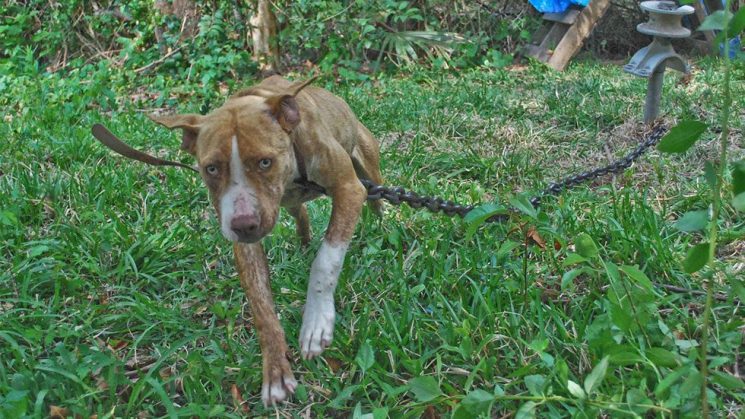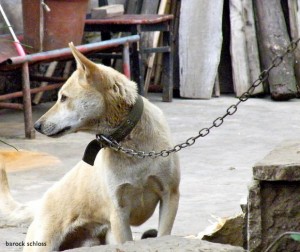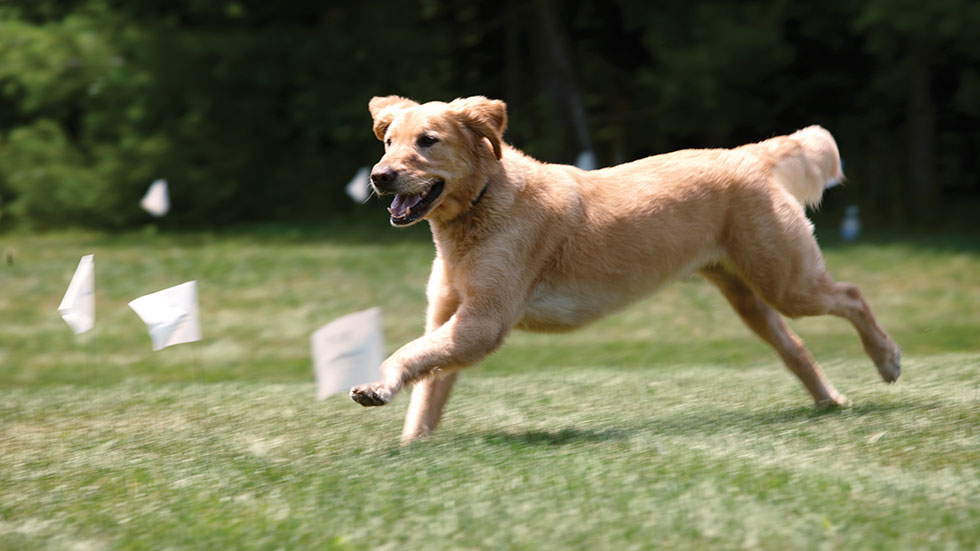By Fort Point, April 17, 2014

Why Chaining Your Dog Is Not the Answer
Dogs need time outdoors. They like to be outside where they can run and do things that dogs do, such as follow scent trails. But unfortunately, scent trails don’t end where your yard ends and a dog won’t automatically stop running at the end of your driveway.
How do you give your pet time outside, but keep him safely within the boundaries of your yard? A standard wood or chain link fence is one option, but that is not much of a barrier for pets who are determined to dig under, jump over or chew through the fence. Many communities do not allow visible fences, and if cost is a factor, physical fencing is the most expensive option. Training your dog to stay in the yard is also an option, but a risky one, especially if he is not closely supervised.
Another option used by some pet owners is chaining or tethering their dog somewhere in the yard. While this may be keep the dog in the yard, there are some significant risks and potential harms of this approach.
Learn about DogWatch Hidden Fences
First, let’s start with the positives.
- A chained dog will stay within a very specific area of your yard that you define.
- The equipment that you need to contain your dog is relatively inexpensive.
 But now let’s hit some of the limitations, risks and potential harms associated with chaining your dog.
But now let’s hit some of the limitations, risks and potential harms associated with chaining your dog.
- While chained, your dog typically has very limited use of the yard, which inhibits their ability to truly run free or explore the many scents that surround them.
- Dogs often get tangled in a chain or other tether, which can cause serious injuries such as broken bones or the loss of a limb due to lack of circulation.
- If the chain becomes wrapped around a dog’s neck, he could be strangled or could hang himself. This is especially possible if he is on the upper level of a deck or near a fence or other obstacle that he tries to jump over.
- The grass in the area in which the dog is chained will die due to the pacing patterns, urine and feces.
- You need to have a rather large tree or secure post in a convenient place in your yard to ensure the chain will hold. The dog is likely to circle the tree, shortening the tether and further restricting his already limited movements.
- Cork screws that turn into your yard are not very secure. Dogs often work them out of the ground. With enough determination, a dog may be able to work the collar off his neck.
- If another animal enters the yard, your dog is effectively trapped to the limits of the chain.
- Dogs are pack animals that can become neurotic, unhappy, and anxious when isolated by being continually tethered. Studies show that chained dogs are more likely to become aggressive than unchained dogs.
If chains, traditional fences and basic training are not the answer to letting your dog enjoy time outdoors, what is?
A hidden or “invisible” fence is an excellent alternative to a physical fence, is much safer than a chain or tether and less risky than relying on training without the safety-net of the hidden fence. With a hidden fence, your dog is allowed to run free, but is trained to stay inside the specific invisible boundaries set by you and the training is reinforced by signals that let the dog know if he gets too close the boundary. The boundaries are flexible enough to encompass the front and/or back yards, as well as make mulch beds, flower gardens, pools and play areas off limits. And yet, even with this flexibility and security, they are less expensive than traditional physical fencing.

Give your dog the gift of untethered freedom this spring and allow him to safely roam his yard. Learn more about the benefits of hidden fences and how they work here, or call your local DogWatch® Hidden Fence dealer today.
Featured Image: “Because we care…” by Josh Henderson is licensed under CC BY-SA 2.0. Image is cropped.